Liver Injury
How to submit an article:
- Registered users can submit any published journal article that has a unique DOI (Digital Object Identifier) name or link to Research Hub.
- For example, you can paste the full DOI link:
https://doi.org/10.1109/5.771073or just the DOI name:10.1109/5.771073into the field above and click submit. - The person who is first to submit a valid article to Research Hub will forever be credited for it, and every article submission earns you +6 Research Points.
Related Topics
Published research studies are articles that present the findings of original research that has undergone a peer-review process and has been made publicly available in scholarly journals, books or other media.
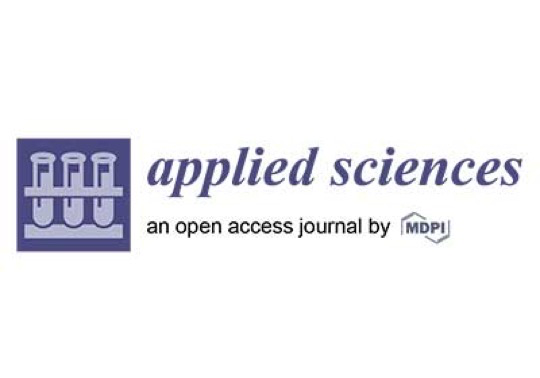
Fermented Gold Kiwi Prevents and Attenuates Chronic Alcohol-Induced Liver Injury in Mice via Suppression of Inflammatory Responses
2023 Jan 31 Applied Sciences Choi J, Lee S, Choi H, Lee J, Lee N, Oh H, et al.
This study demonstrates that fermented gold kiwi (FGK) exerts a protective effect against alcohol-induced liver damage by improving alcohol metabolism and increasing anti-inflammatory activity. This finding suggests that FGK might be developed into a functional food treatment against alcohol-induced liver disease.
Animal Study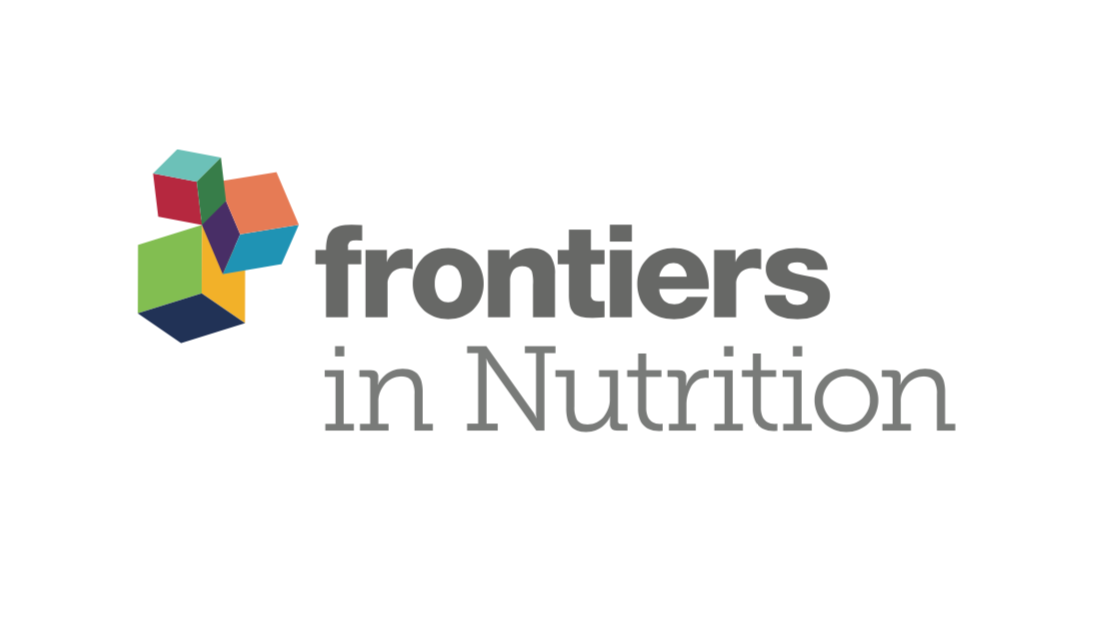
Dietary Goji Shapes the Gut Microbiota to Prevent the Liver Injury Induced by Acute Alcohol Intake
2022 Jul 08 Frontiers in Nutrition Guo L, Guan Q, Duan W, Ren Y, Zhang XJ, Xu HY, et al.
Experimental Study Animal Study Alcohol Intake Gut MicrobiotaGoji berry supplementation can potentially improve gut microbiota and prevent liver injury caused by acute alcohol consumption.

Integrating Network Pharmacology and Metabolomics to Elucidate the Mechanism of Action of Huang Qin Decoction for Treament of Diabetic Liver Injury
2022 May 25 Frontiers in Pharmacology Xu X, Fang C, Wang Y, Lu F, Liu S
The results demonstrate that the combination of metabolomics and network pharmacology could be used to reflect the effects of HQD on the biological network and metabolic state of DLI and to evaluate the drug efficacy of HQD and its related mechanisms.
Network Pharmacology Huang Qin Decoction Diabetic Liver Injury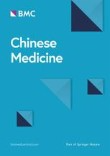
Si-Wu-Tang ameliorates fibrotic liver injury via modulating intestinal microbiota and bile acid homeostasis
2021 Nov 04 Chinese Medicine Xue X, Wu J, Ding M, Gao F, Zhou F, Xu B, et al.
Si-Wu-Tang (SWT) decreased inflammatory response, reconstructed gut microbiota-mediated bile acid (BA) homeostasis as well as activated farnesoid X receptor (FXR) pathways, which eventually protected against CCl4-induced fibrotic liver injury.
Animal Study Si Wu Tang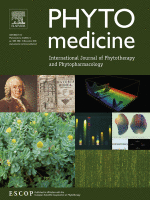
Association between use of Qingfei Paidu Tang and mortality in hospitalized patients with COVID-19: A national retrospective registry study
2021 Feb 28 Phytomedicine Lihua Zhang, Xin Zheng, Xueke Bai, Qing Wang, Bowang Chen, Haibo Wang, et al.
COVID-19Among the patients hospitalized for COVID-19, the use of Qingfei Paidu Tang was associated with halving the risk of mortality, without raising the risk of acute liver injury or acute kidney injury.
Research insights are moderated by the Research Hub team and offer an at-a-glance overview of interesting research findings.

2022 Frontiers in Nutrition
Goji berry supplementation can potentially improve gut microbiota and prevent liver injury caused by acute alcohol consumption.
Experimental Study Alcohol Intake Gut Microbiota
Dietary Goji Shapes the Gut Microbiota to Prevent the Liver Injury Induced by Acute Alcohol Intake
Guo L, Guan Q, Duan W, Ren Y, Zhang XJ, Xu HY, et al.

2021 Phytomedicine
Among the patients hospitalized for COVID-19, the use of Qingfei Paidu Tang was associated with halving the risk of mortality, without raising the risk of acute liver injury or acute kidney injury.
COVID-19
Association between use of Qingfei Paidu Tang and mortality in hospitalized patients with COVID-19: A national retrospective registry study
Lihua Zhang, Xin Zheng, Xueke Bai, Qing Wang, Bowang Chen, Haibo Wang, et al.
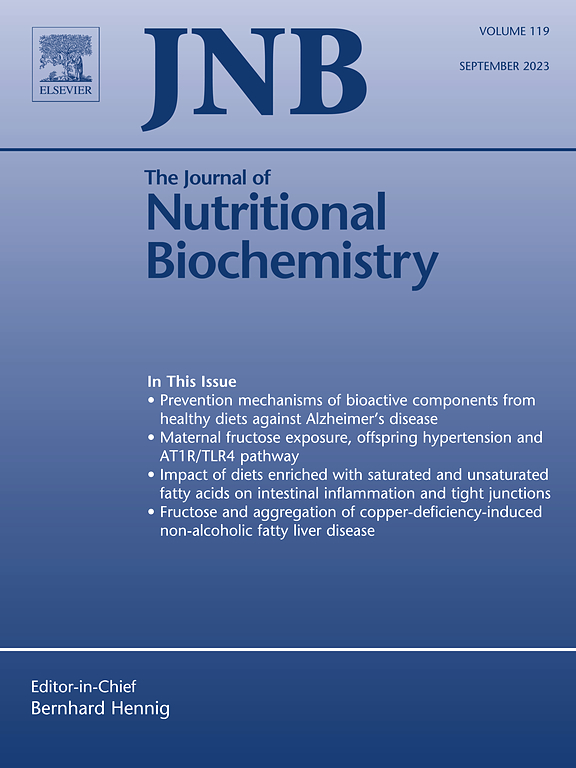
2020 The Journal of Nutritional Biochemistry
Catechin-rich green tea extract (GTE) exercised anti-inflammatory activities can be beneficial in managing Nonalcoholic fatty liver disease (NAFLD) by reducing liver injury and gut-derived endotoxins.
Review Article Anti-Inflammatory Green Tea Hepatoprotective
Anti-inflammatory activities of green tea catechins along the gut–liver axis in nonalcoholic fatty liver disease: lessons learned from preclinical and human studies
Hodges JK, Sasaki GY, Bruno RS

2019 Nutrients
Bioactive compounds present in different parts of radishes, such as leaves, sprouts, stem and roots, act on a variety of potential drug targets associated with ailments, such as cancer, inflammation, liver injury and diabetes.
Systematic Review Daikon
Deciphering the Nutraceutical Potential of Raphanus sativus—A Comprehensive Overview
Abinaya ManivannanOrcID,Jin-Hee Kim,Do-Sun Kim,Eun-Su Lee andHye-Eun Lee

2018 Molecules
The biomarkers that were significantly different between black seeds and white sesame seeds are highly related to the functions recorded in traditional Chinese medicine.
Systematic Review
Identification of Nutritional Components in Black Sesame Determined by Widely Targeted Metabolomics and Traditional Chinese Medicines
Wang D, Zhang L, Huang X, Wang X, Yang R, Mao J, et al.
Review Articles
Review articles summarise and critically evaluate the current state of research on a specific topic or field by synthesising multiple primary research studies.

Anti-inflammatory activities of green tea catechins along the gut–liver axis in nonalcoholic fatty liver disease: lessons learned from preclinical and human studies
2020 Nov The Journal of Nutritional Biochemistry Hodges JK, Sasaki GY, Bruno RS
Review Article Green Tea Hepatoprotective Anti-InflammatoryCatechin-rich green tea extract (GTE) exercised anti-inflammatory activities can be beneficial in managing Nonalcoholic fatty liver disease (NAFLD) by reducing liver injury and gut-derived endotoxins.

Schisandra fruits for the management of drug-induced liver injury in China: A review
2019 Jun Phytomedicine Zhu P, Li J, Fu X, Yu Z
SF-derived drugs are effective in managing DILI. But this is what is happening in China. We hope that SF-derived drugs can benefit DILI patients all over the world in the near future. This review is expected to provide reference for people who are studying and prescribing SF-derived drugs.
Review Article Drug-Induced Liver Injury Drug-induced Liver Injury (DILI) Wu Wei Zi
Deciphering the Nutraceutical Potential of Raphanus sativus—A Comprehensive Overview
2019 Feb 14 Nutrients Abinaya ManivannanOrcID,Jin-Hee Kim,Do-Sun Kim,Eun-Su Lee andHye-Eun Lee
Systematic Review DaikonBioactive compounds present in different parts of radishes, such as leaves, sprouts, stem and roots, act on a variety of potential drug targets associated with ailments, such as cancer, inflammation, liver injury and diabetes.

Identification of Nutritional Components in Black Sesame Determined by Widely Targeted Metabolomics and Traditional Chinese Medicines
2018 May 15 Molecules Wang D, Zhang L, Huang X, Wang X, Yang R, Mao J, et al.
Systematic Review Meta-AnalysisThe biomarkers that were significantly different between black seeds and white sesame seeds are highly related to the functions recorded in traditional Chinese medicine.

The Role of Oxidative Stress and Antioxidants in Liver Diseases
2015 Nov 02 International Journal of Molecular Sciences Li S, Tan HY, Wang N, Zhang ZJ, Lao L, Wong CW, et al.
The review concludes that oxidative stress plays a crucial role in the initiation and progression of liver injury induced by diverse factors. Antioxidants, especially those found in edible or medicinal plants, exhibit promising in vivo therapeutic effects in animal studies, demonstrating their potential in preventing and treating liver diseases associated with oxidative stress. While clinical study conclusions remain uncertain, the anti-inflammatory, antioxidant, and free radical scavenging abilities of natural antioxidants are highlighted as significant factors contributing to their potential health benefits and bioactivities in the context of liver diseases.
Review ArticleClinical Trials
Clinical trials are research studies that involve people and are conducted to evaluate the safety and efficacy of new treatments or interventions, such as drugs, medical devices, or behavioural therapies.
Study Protocols
Published study protocols are detailed plans that outline the objectives, methodology, statistical analyses, and organisation of a research study that have been made publicly available for others to review and use as a reference.
Presentation Slides

Experimental Study
Goji berry supplementation can potentially improve gut microbiota and prevent liver injury caused by acute alcohol consumption.
Guo L, Guan Q, Duan W, Ren Y, Zhang XJ, Xu HY, Shi JS, Wang FZ, Lu R, Zhang HL, Xu ZH, Li H, Geng Y

Among the patients hospitalized for COVID-19, the use of Qingfei Paidu Tang was associated with halving the risk of mortality, without raising the risk of acute liver injury or acute kidney injury.
Lihua Zhang, Xin Zheng, Xueke Bai, Qing Wang, Bowang Chen, Haibo Wang, Jiapeng Lu, Shuang Hu, Xiaoyan Zhang, Haibo Zhang, Jiamin Liu, Ying Shi, Zhiye Zhou, Lanxia Gan, Xi Li, Jing Li

Review Article
Catechin-rich green tea extract (GTE) exercised anti-inflammatory activities can be beneficial in managing Nonalcoholic fatty liver disease (NAFLD) by reducing liver injury and gut-derived endotoxins.
Hodges JK, Sasaki GY, Bruno RS

Systematic Review
Bioactive compounds present in different parts of radishes, such as leaves, sprouts, stem and roots, act on a variety of potential drug targets associated with ailments, such as cancer, inflammation, liver injury and diabetes.
Abinaya ManivannanOrcID,Jin-Hee Kim,Do-Sun Kim,Eun-Su Lee andHye-Eun Lee

Systematic Review
The biomarkers that were significantly different between black seeds and white sesame seeds are highly related to the functions recorded in traditional Chinese medicine.
Wang D, Zhang L, Huang X, Wang X, Yang R, Mao J, Wang X, Wang X, Zhang Q, Li P.
Executive Summary
Write an executive summary in the form of a blog article on the topic of "Research into Chinese medicine treatment for Liver Injury" summarising the research below and using language that can be easily understood by patients and avoiding medical jargon using a professional and caring tone of voice.
Write an executive summary in the form of a blog article on the topic of "Researched Chinese medicine treatments for Liver Injury" summarising the research below in an objective and easy to understand way, and using language that can be easily understood by patients. Group the article into Chinese medicine treatments first, followed by nutrition and other treatments. Avoid using medical jargon and use a professional and caring tone of voice.
Write me a concise but easy to understand executive summary on the topic of "Chinese medicine treatments for Liver Injury" based on the following research that I will give you. Your summary should be 2 paragraphs long in Australian English spelling and include references to the studies.
A Experimental Study published in 2022 in the journal Frontiers in Nutrition found that Goji berry supplementation can potentially improve gut microbiota and prevent liver injury caused by acute alcohol consumption. In this study, the effects of Goji berry supplementation on liver injury induced by acute alcohol intake were examined. Over a 14-day period, the changes in liver enzyme levels, pro-inflammatory cytokine levels, and lipopolysaccharide content in the liver tissue were observed. In addition, the integrity of the epithelial barrier and levels of butyric acid in the cecum were also evaluated. The direct relationship between gut microbiota modifications and liver protective effects was mainly established via antibiotic treatments and fecal microbiota transplantation experiments. The results revealed that Goji supplementation helped maintain liver health by lowering liver injury indicators, maintaining the epithelial barrier's integrity, and increasing the butyric acid levels in the cecum content. The same types of effects were observed for Goji and fecal microbiota transplantation treatments. These maneuvers increased the glutathione levels in the liver and selectively promoted the growth of certain gut bacteria. The metabolite analysis showed that Goji berries and its trained microbiota were able to regulate specific metabolic compounds, shedding light on the interplay between Goji, gut microbiota, and liver homeostasis.
A published in 2021 in the journal Phytomedicine found that Among the patients hospitalized for COVID-19, the use of Qingfei Paidu Tang was associated with halving the risk of mortality, without raising the risk of acute liver injury or acute kidney injury. Of the 8939 patients included, 28.7% received QPT. The COVID-19 related mortality was 1.2% among the patients receiving QPT and 4.8% among those not receiving QPT. After adjustment for patient characteristics and concomitant treatments, QPT use was associated with a relative reduction of 50% in-hospital COVID-19 related mortality. This association was consistent across subgroups by sex and age. Meanwhile, the incidences of acute liver injury and acute kidney injury were comparable between patients receiving QPT and those not receiving QPT. The major study limitations included that the study was an observational study based on real-world data rather than a randomized control trial, and the quality of data could be affected by the accuracy and completeness of medical records. In this analysis based on a national registry of hospitalized patients with COVID-19, we first demonstrated that QPT use was associated with halving the risk of in-hospital mortality, without any significant increase in the risk of adverse effects, such as acute liver injury or acute kidney injury. Our findings have provided new evidence and insights regarding the treatment of COVID-19.
A Review Article published in 2020 in the journal The Journal of Nutritional Biochemistry found that Catechin-rich green tea extract (GTE) exercised anti-inflammatory activities can be beneficial in managing Nonalcoholic fatty liver disease (NAFLD) by reducing liver injury and gut-derived endotoxins. The research is built around the study of the anti-inflammatory properties of catechin-rich green tea extract (GTE). The primary analytical interest is its effects on inflammatory responses that contribute to Nonalcoholic fatty liver disease (NAFLD), specifically nonalcoholic steatohepatitis (NASH). The extraction focuses on inhibiting the activation of the hepatic nuclear factor kappa-B, which is known to exacerbate liver injury. The results have shown positive contributions of GTE to management of NAFLD. Itn was observed that the extract limits the activation of the hepatic nuclear factor kappa-B and in turn, reduces NASH-associated liver injury. Additionally, green tea extract was found to contain hepatic-level benefits that attenuate intracellular redox distress and pro-inflammatory signaling. It was also found to improve the gut barrier function, limit the translocation of gut-derived endotoxins, and exercise prebiotic and antimicrobial effects on the gut microbial ecosystem. These results can potentially contribute to managing NAFLD-associated morbidity.
A Systematic Review published in 2019 in the journal Nutrients found that Bioactive compounds present in different parts of radishes, such as leaves, sprouts, stem and roots, act on a variety of potential drug targets associated with ailments, such as cancer, inflammation, liver injury and diabetes. Radishes is of great pharmaceutical importance, most of which has been attributed to its antioxidant property. The administration of radish extracts under numerous pathological conditions aids in the recovery of diseases and in the prevention of harmful ailments because of their attributed bioactivities. Bioactive compounds present in different parts of radishes, such as leaves, sprouts, stem and roots, act on a variety of potential drug targets associated with ailments, such as cancer, inflammation, liver injury and diabetes. However, the in-depth molecular mechanistic studies are required to address the regulatory roles of bioactive compounds in radish extracts. In future, researches focusing on the determination and pharmacokinetic elucidation of the bioactive compounds in radishes could facilitate the designing of plant based drugs for life threatening disorders, such as cancer and diabetes. Overall, the knowledge gained from the present researches in radish should be utilized in the discovery of novel drug molecules with higher efficacy towards drug targeting with less side effects.
A Systematic Review published in 2018 in the journal Molecules found that The biomarkers that were significantly different between black seeds and white sesame seeds are highly related to the functions recorded in traditional Chinese medicine. Chemical composition of secondary metabolites is of great importance for quality control of agricultural products. Black sesame seeds are significantly more expensive than white sesame seeds, because it is thought that black sesame seeds are more beneficial to human health than white sesame seeds. However, the differences in nutrient composition between black sesame seeds and white sesame seeds are still unknown. The current study examined the levels of different metabolites in black and white sesame seeds via the use of a novel metabolomics strategy. Using widely targeted metabolomics data, we obtained the structure and content of 557 metabolites, out of which 217 metabolites were identified, and discovered 30 metabolic pathways activated by the secondary metabolites in both black and white sesame seeds. Our results demonstrated that the main pathways that were differentially activated included: phenylpropanoid biosynthesis, tyrosine metabolism, and riboflavin metabolism. More importantly, the biomarkers that were significantly different between black seeds and white sesame seeds are highly related to the functions recorded in traditional Chinese medicine. The results of this study may serve as a new theoretical reference for breeding experts to promote the genetic improvement of sesame seeds, and therefore the cultivation of higher quality sesame varieties.
Moderation Tools
Topic
Sign In
Users not signed in are limited to viewing the 5 most recent items of content.